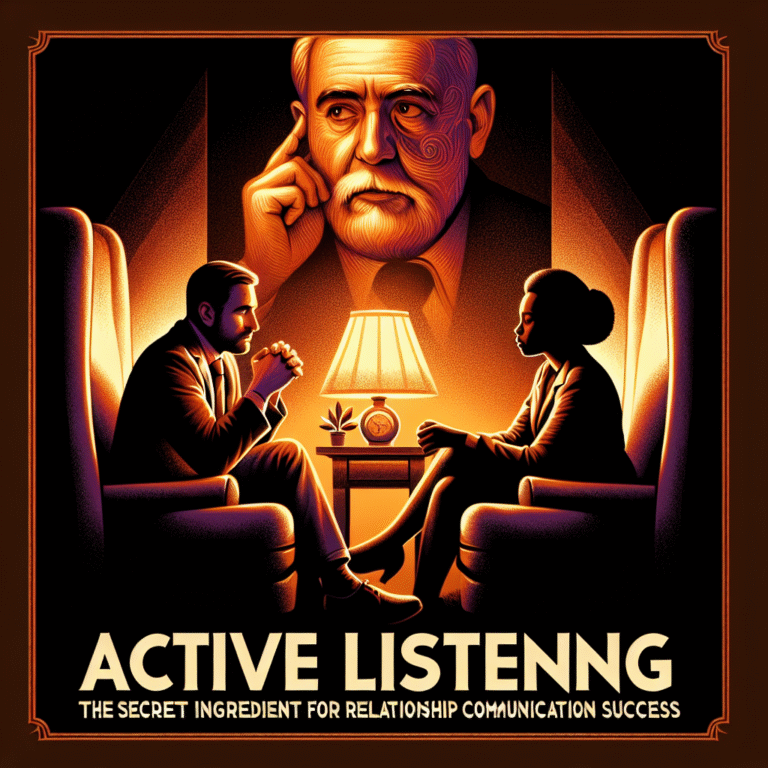
Breaking the Chains of Fear: A Deep Dive into Behavioral Psychology and Phobia Recovery
Introduction
Fear is an emotion that transcends cultures, ages, and personal circumstances. It can act as a protective mechanism, steering us away from danger and peril. However, when fear manifests as a phobia, it can become a debilitating force that limits our potential and quality of life. In this article, Breaking the Chains of Fear: A Deep Dive into Behavioral Psychology and Phobia Recovery, we explore the intricate relationship between fear, behavioral psychology, and effective recovery strategies. This deep dive not only aims to provide readers with a solid understanding of phobias but also offers compelling insights on overcoming them.
Phobias are irrational fears that can trigger anxiety responses far beyond what is warranted. For some, this may mean a fear of heights, while for others, it could manifest as an inexplicable dread of spiders. The impact of phobias can be profound, often leading individuals to avoid certain environments or situations altogether. By leveraging behavioral psychology, a branch of psychology rooted in the principles of learning and the science of behavior, we can better understand the mechanics of fear and discover actionable methods for recovery.
Whether you are grappling with a personal phobia, supporting a loved one, or simply seeking to learn more about human behavior, this article serves as your guide. Together, we will break the chains of fear and uncover new paths toward healing and empowerment.
Understanding Phobia: The Basics
What is a Phobia?
At its core, a phobia constitutes an intense, irrational fear of a specific object, situation, or activity. Unlike general anxiety, which can be diffuse and unfocused, phobias are characterized by their specificity. The emotional response invoked often leads to avoidance behavior, where individuals go to great lengths to keep away from whatever causes their fear.
Types of Phobias
Phobias can be broadly categorized into three main types:
- Specific Phobias: These are characterized by an intense fear of a particular object or situation, such as heights (acrophobia), spiders (arachnophobia), or flying (aviophobia).
- Social Phobia (Social Anxiety Disorder): This involves a fear of social situations where one might be judged or scrutinized, leading to significant distress and avoidance.
- Agoraphobia: This is the fear of being in situations where escape might be difficult or embarrassing, often leading to individuals avoiding public places or even leaving their homes.
A Brief Overview of Behavioral Psychology
Behavioral psychology focuses on observable behaviors, emphasizing the environmental influences that shape our responses and reactions. Key theories include:
- Classical Conditioning: Developed by Ivan Pavlov, this theory posits that fear responses can be learned through association. For instance, if a child experiences a dog bite, they may begin to fear all dogs.
- Operant Conditioning: This principle, introduced by B.F. Skinner, explains how behavior is influenced by reinforcement or punishment. Avoidance of feared stimuli can become reinforced through the temporary relief it provides from anxiety.
- Social Learning Theory: Albert Bandura’s theory highlights the role of observation and modeling in learning behaviors. If a child witnesses a parent exhibiting fear towards something, they may adopt that fear as well.
How Phobias Develop
Understanding how phobias develop is crucial for effective recovery strategies. Below are some common pathways through which phobias can manifest:
Traumatic Experiences: Direct exposure to a fearful event can lead to the development of a phobia. For example, someone who experiences a plane crash might develop a fear of flying.
Genetics and Family History: There appears to be a genetic component to phobias, as individuals with a family history of anxiety disorders are more prone to developing phobias themselves.
- Environmental Influences: Cultural context and early childhood experiences can shape how we perceive and respond to fear. Societal messages about certain animals or scenarios can contribute to phobic behaviors.
Case Study: The Dog Bite
Let’s consider a relevant case study illustrating the development of a specific phobia:
Background: Sarah, a 7-year-old, was bitten by a dog while playing at a local park. Following the incident, Sarah developed a severe fear of all dogs.
Analysis: This case exemplifies how classical conditioning operates in fear development. Sarah’s traumatic experience directly connected the presence of dogs with pain and fear. As her avoidance behavior escalated, her anxiety around dogs increased, reinforcing her phobia.
The Impact of Phobias on Daily Life
Phobias do not only pose mental and emotional challenges; they can also hinder one’s daily functioning. Common impacts include:
- Social Isolation: Individuals may withdraw from social interactions for fear of encountering their phobic trigger.
- Career Limitations: A fear of flying or public speaking, for instance, can impede career opportunities.
- Emotional Distress: Constant anxiety and stress can lead to other mental health issues, including depression.
The Ripple Effect of Phobias
Phobias extend their reach beyond the individual, affecting family dynamics, relationships, and social circles. Family members may unknowingly accommodate phobic experiences, further enabling avoidance behaviors. As a result, overcoming phobias often requires a collective effort.
Breaking the Chains of Fear: Recovery Strategies
Cognitive Behavioral Therapy (CBT)
CBT is a highly effective treatment for phobias. It focuses on identifying and challenging negative thought patterns while gradually exposing individuals to their fears in a controlled manner.
Key Components of CBT:
Cognitive Restructuring: This involves identifying irrational beliefs related to the feared object or situation. A therapist guides the individual to replace these thoughts with more balanced perspectives.
- Exposure Therapy: Gradual exposure to the phobia in a safe environment helps desensitize the individual. This process often includes:
- Imaginal Exposure: Picturing the feared object or situation.
- In Vivo Exposure: Direct interaction with the fear trigger, beginning with less anxiety-provoking situations.
Case Study: Conquering Social Phobia
Background: James, a 30-year-old finance professional, avoided networking events due to overwhelming anxiety about being judged.
Recovery Path: Through CBT, he worked on challenging his fears of negative evaluation and engaged in exposure therapy by attending small gatherings first.
Outcome: Over time, James learned to manage his anxiety and even found enjoyment in social settings.
Mindfulness and Relaxation Techniques
Incorporating mindfulness techniques can significantly aid in reducing anxiety levels. These practices help individuals stay grounded and present, mitigating fear responses. Techniques include:
- Deep Breathing Exercises: Help calm the nervous system and reduce anxiety symptoms.
- Meditation: Promotes relaxation and self-awareness, aiding in emotional regulation.
- Progressive Muscle Relaxation: Encourages physical relaxation, reducing tension associated with fear.
Medication as an Adjunct Therapy
In certain cases, medication may be recommended to help manage anxiety symptoms. Antidepressants and anti-anxiety medications can be effective when combined with therapeutic approaches.
Support Groups
Connecting with others who share similar experiences can provide comfort and encouragement. Support groups create a safe space for individuals to share their struggles and victories, promoting a sense of belonging.
Recovery Success Stories
Case Study Compilation
Fear of Heights: Melissa, who struggled with acrophobia, experienced a gradual recovery through guided exposure therapy combined with CBT techniques. After several months, she successfully climbed to the top of a building for the first time, celebrating her courage.
Fear of Spiders: Mark’s journey involved joining a support group to share his experiences with arachnophobia. His active participation and engagement in mindfulness practices empowered him to confront his anxieties head-on.
- Fear of Public Speaking: After joining a speaking club and receiving feedback, Lisa learned to transform her fear into excitement. With practice and support, she delivered a speech in front of hundreds, overcoming years of avoidance.
Celebrating Incremental Progress
The stories of Melissa, Mark, and Lisa demonstrate that recovery from phobias is often non-linear, marked by incremental progress rather than a binary win or loss. Each small step toward facing fears can serve as a powerful testament to human resilience.
Conclusion
In our exploration of Breaking the Chains of Fear: A Deep Dive into Behavioral Psychology and Phobia Recovery, we’ve delved into the origins of phobias and the profound effects they can have on individuals’ lives. By utilizing the principles of behavioral psychology, we uncovered various effective strategies for overcoming these irrational fears. The key takeaway is that recovery is possible with the right tools, support, and determination.
As we continue to challenge our fears, we not only reclaim our lives but also inspire others to embark on their journeys of healing. Let fear not be an anchor but rather a stepping stone toward empowerment and personal growth.
FAQs
1. What are the common symptoms of phobias?
Symptoms of phobias can include intense anxiety, panic attacks, rapid heartbeat, sweating, trembling, and a strong desire to flee the situation.
2. Can phobias be inherited?
Yes, research suggests that phobias can have a genetic component, meaning individuals may be predisposed to developing phobias based on family history.
3. How do I know if I need therapy for my phobia?
If your phobia significantly interferes with daily life, social interactions, or causes persistent distress, it may be beneficial to seek professional help.
4. What role does exposure therapy play in recovery?
Exposure therapy helps individuals gradually confront their fears in a controlled manner, ultimately reducing their anxiety and desensitizing them to the phobic trigger.
5. Are there alternative therapies for overcoming phobias?
In addition to traditional therapies like CBT and exposure therapy, alternative therapies can include mindfulness meditation, yoga, and some holistic approaches focused on relaxation and grounding.
By addressing these frequently asked questions, we hope to provide further clarity and support for those seeking assistance in Breaking the Chains of Fear. Let us continue to open the door to new possibilities, where fear no longer governs our decisions, and recovery becomes a path we courageously walk together.
















